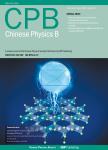Effect of grain size on gas bubble evolution in nuclear fuel:Phase-field investigations
Effect of grain size on gas bubble evolution in nuclear fuel: Phase-field investigations作者机构:Science and Technology on Reactor System Design Technology LaboratoryNuclear Power Institute of ChinaChengdu 610213China Key Laboratory of Materials Modification by LaserIonand Electron BeamsDalian University of TechnologyDalian 116024China
出 版 物:《Chinese Physics B》 (中国物理B(英文版))
年 卷 期:2024年第33卷第1期
页 面:563-572页
核心收录:
学科分类:08[工学] 082701[工学-核能科学与工程] 0827[工学-核科学与技术]
基 金:Project supported by the National Natural Science Foundation of China (Grant Nos.U2167217,12205286,and 11905025) the National MCF Energy Research and Development Program of China (Grant No.2018YFE0308105)
主 题:grain size point defects fission gas bubble
摘 要:Numerous irradiation-induced gas bubbles are created in the nuclear fuel during irradiation, leading to the change of microstructure and the degradation of mechanical and thermal properties. The grain size of fuel is one of the important factors affecting bubble evolution. In current study, we first predict the thermodynamic behaviors of point defects as well as the interplay between vacancy and gas atom in both UO_(2) and U_(3)Si_(2) according to ab initio approach. Then, we establish the irradiation-induced bubble phase-field model to investigate the formation and evolution of intra-and inter-granular gas bubbles. The effects of fission rate and temperature on the evolutions of bubble morphologies in UO_(2) and U_(3)Si_(2) have been revealed. Especially, a comparison of porosities under different grain sizes is examined and analyzed. To understand the thermal conductivity as functions of grain size and porosity, the heat transfer capability of U_(3)Si_(2) is evaluated.



